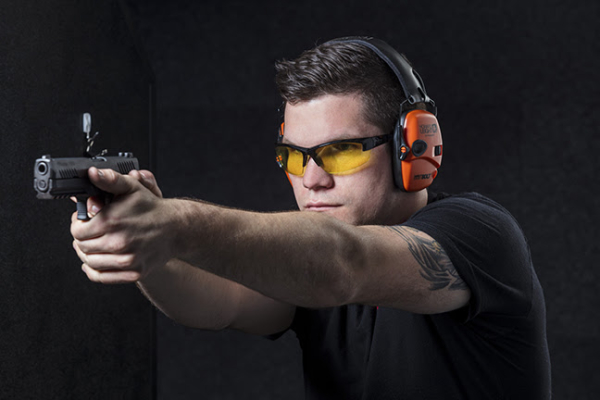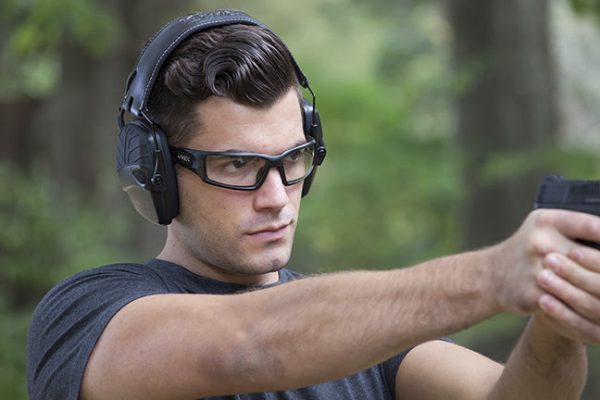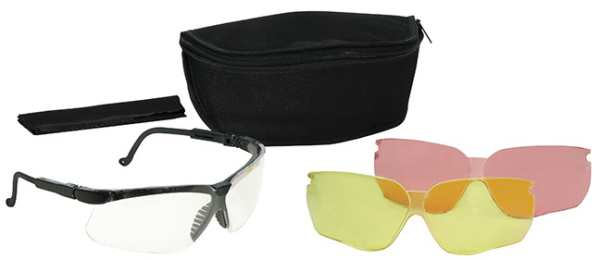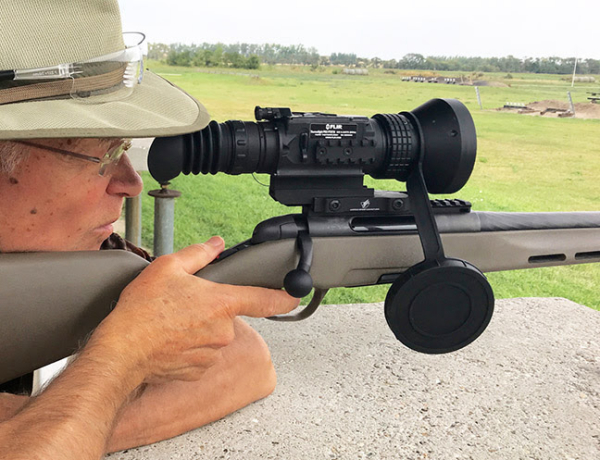Why your sunglasses or prescription eyeglasses probably don’t offer enough protection

Whether shooting sporting clays, sighting in a new rifle from the bench or practicing with a pistol, shooting sports enthusiasts know they need to protect their eyes. Unfortunately, well-intended folks who think their standard sunglasses or eyeglasses provide adequate impact protection are taking serious risks with their vision.
A Higher Standard
Safety eyewear must conform to a higher standard of impact resistance than regular eyeglasses and sunglasses. This higher standard applies to both the lenses and the frames.
In the United States, safety glasses are tested to ensure they meet or exceed the ANSI Z87.1 standard. This standard is established and periodically updated by the Occupational Safety and Health Administration (OSHA). Eyewear with this key certification has passed basic-impact testing (both frames and lenses) and is marked “Z87” on the temples. Prescription safety eyewear which has met or exceeded ANSI Z87 standards is marked "Z87-2". Finally, safety eyewear marked “Z87+” has lenses that have passed high-impact testing.

Testing
Frames for safety glasses are tested using the same criteria whether they will be used in basic-impact or high-impact applications. This includes a specific High Mass Impact Test, plus durability testing that includes a flammability-resistance test, a corrosion-resistance test and other durability tests.
In the High Mass Impact Test, a one-inch diameter steel projectile is dropped through a tube from a height of 50 inches onto a safety lens mounted in a frame. The frame is "worn" by an artificial head form. To pass, the frame must fully retain the lens, and no piece can become detached from the inner surface of the frame component that holds the lenses. The lens must not crack, chip or break. All glass safety lenses must undergo this test. For plastic safety lenses, however, only a statistical sample of a large batch of lenses needs to be tested. Safety eyewear passing this test receive basic-impact certification and will be marked “Z87” on the temples.
In high-impact testing, a high-velocity test is performed by shooting a quarter-inch diameter steel ball at the lens at a speed of 150 feet per second. The test is repeated multiple times (each time with a new frame and lens) at different angles and positions of impact. To pass, the lens must not crack, chip or break, and it must not become dislodged from the lens holder. Safety eyewear passing this test (and the High Mass Impact Test) receive high-impact certification and are marked “Z87+” on the temples.
In the world of safety eyewear, “ballistic-rated” means military-grade impact protection. Such safety eyewear is designed and tested to survive the military’s high-speed impact and fragmentation standards, which exceed ANSI Z87.1 high-impact standards. Military V0 ballistic-rated eyewear must be able to withstand up to a .15 caliber projectile fired at the lens and frame at 64 feet per second.

Other Considerations
In addition to choosing shooting glasses that have been tested, certified and marked to meet ANSI Z87.1 standards, look for comfortable wraparound designs that fit close to the face and afford ample side protection. Such designs minimize the potential for ejected casings – often from adjacent shooting lanes – to find their way between the face and the lens. Wraparound frame designs also typically fit well and provide the most comfort with popular earmuff-style hearing protection. Finally, lens coatings that prevent scratches and fogging are another consideration, as is a lens’ ability to block harmful UVA and UVB rays.

Prescription Glasses
Don’t let the fact that you wear prescription glasses dissuade you from properly protecting your eyes while shooting. You have several good options.

First, consider switching to contact lenses when shooting so you can wear impact-certified safety eyewear. If contact lenses aren’t your thing, a variety of safety glasses designed to be worn over eyeglasses are available, such as Honeywell UVEX HL100 Series safety eyewear, which fits over most prescription eyeglasses. Finally, your optometrist can make you a comfortable pair of prescription safety glasses at a reasonable cost.
Final Thoughts
Don’t take unnecessary chances with your vision by wearing regular sunglasses or prescription eyeglasses while shooting. Insist on genuine safety eyewear that’s been designed, tested and certified to protect against the hazards of the shooting environment.
- - Josh Lantz